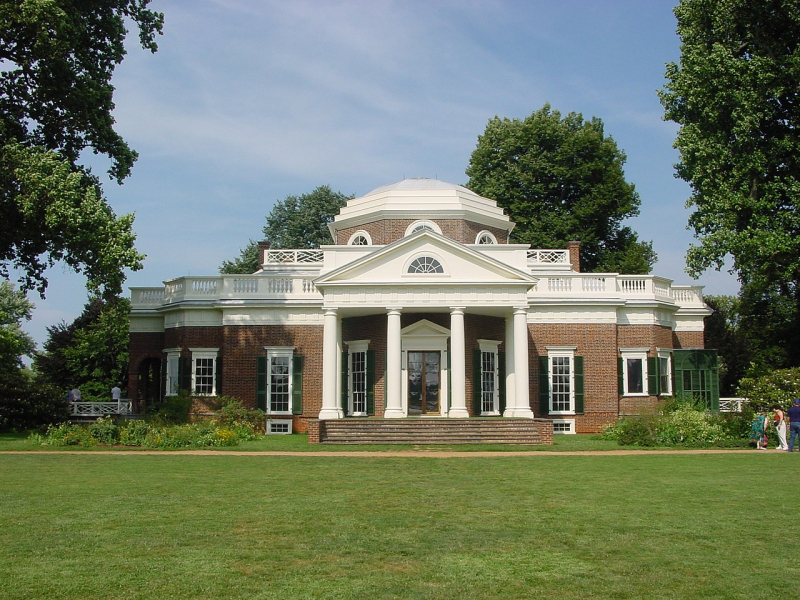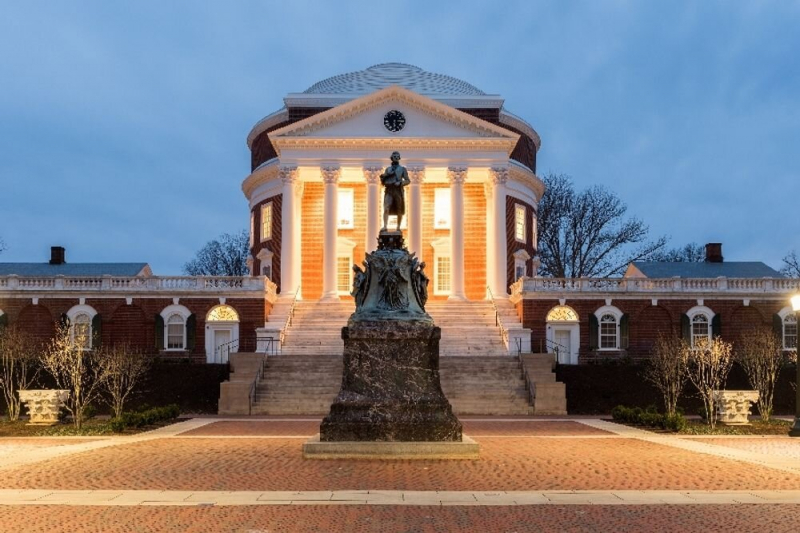Thomas Jefferson also practiced architecture
Jefferson was in charge of designing the Federal City in Washington, D.C. while serving as Secretary of State. Working with Major Pierre Charles L'Enfant, Jefferson had a hand in choosing the designs for many of the earliest governmental structures in the United States. By "providing them with models for their study and imitation," Jefferson took advantage of the occasion to "improve the taste of his compatriots." He stated that it was "a fortunate chance of introducing into the state an example of architecture in the classic style of antiquity" when he was chosen to design the Virginia State Capitol, for instance. Federal structures helped establish the neoclassical style in America in part thanks to Jefferson's design influence. Because of this, Fiske Kimball, an architectural historian, referred to Jefferson as "the founder of our national architecture."
Jefferson not only planned public structures but also numerous private Virginia houses, frequently for friends, including Monticello. Monticello, which is Italian for "Little Mountain," was built by Thomas Jefferson as his principal house in 1768. It was situated on a mountaintop with a view of his 5,000-acre plantation. He was cited as stating, "Architecture is my joy and putting up, and tearing down, is one of my favorite amusements." He spent most of his adult life creating Monticello. Local carpenters and masons worked mostly on the construction, with help from Jefferson's slaves. In 1770, he relocated to the South Pavilion. His ongoing goal was to create a Palladian-style neoclassical masterpiece at Monticello.
Along with the Monticello design, Virginia University is also one of his famous designs. The architectural forms of ancient Greece and Rome were highly regarded by Jefferson as being the most symbolic of American democracy. The library's "Rotunda" was based on the Roman Pantheon, and each academic building, known as a pavilion, had a two-story temple façade. Jefferson referred to the campus's grounds as the "Academical Village," and he used its design to express his ideas about education. The 10 pavilions, which formed a square and were connected by colonnades with the rows of dormitories for the students behind them, included classrooms and faculty housing. To emphasize the significance of the rural lifestyle, gardens and vegetable plots were positioned behind the pavilions and were enclosed by serpentine walls. The university's central building was a library rather than a cathedral, highlighting its secular nature.













